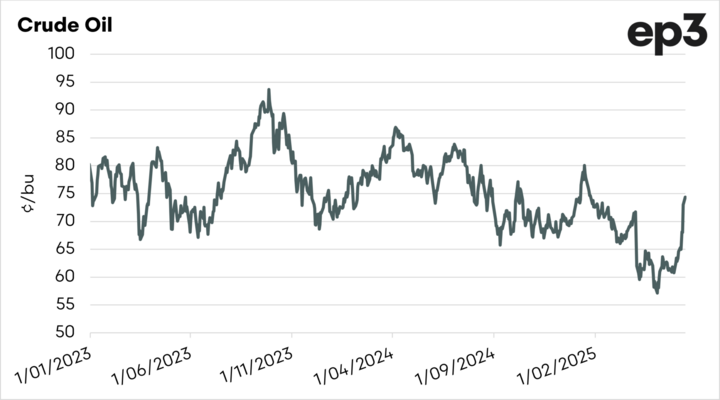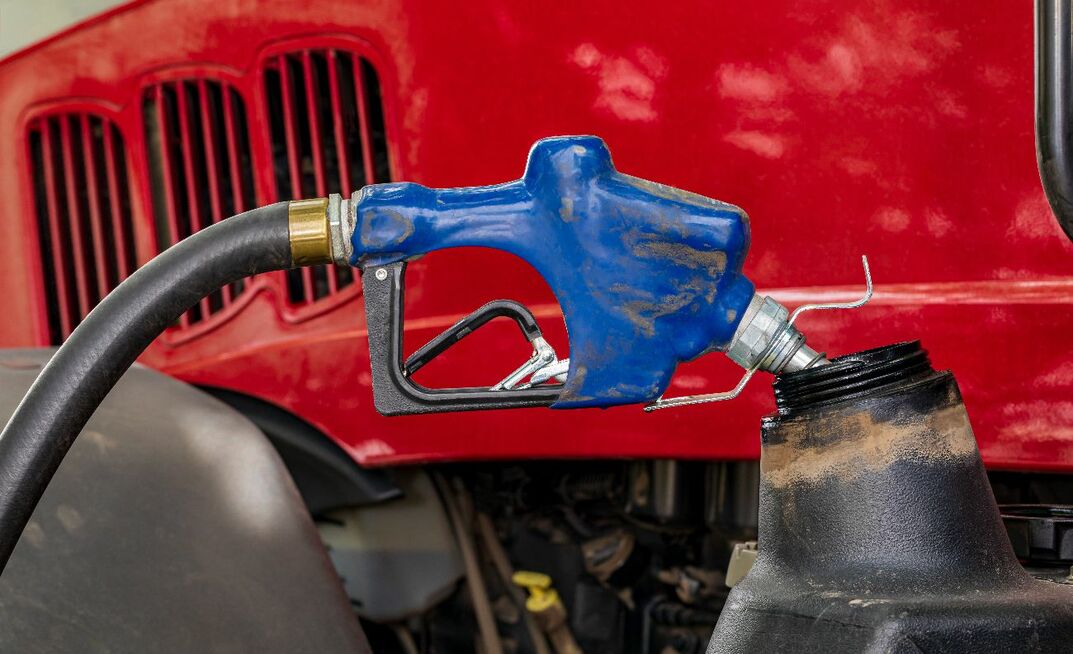FARMERS may need to brace for higher diesel prices after the conflict between Israel and Iran suddenly escalated last week - sending global oil prices soaring.
Israel launched a surprise attack on Iran last week, and strikes between the two countries continued to intensify over the weekend.
According to Episode 3 analyst, Andrew Whitelaw, Brent crude oil jumped in response - increasing seven per cent initially before settling around 4-5 per cent higher, which he put down to "nervousness" in the market.
While this is bad news for the global oil market (not to mention the innocent civilians caught in the fight), and will likely mean higher fuel prices, Whitelaw said there may be an upside for Australian grain growers.
IMPACT OF THE CONFLICT ON FUEL PRICES
Whitelaw explained the connection between the conflict and crude oil.
Since Iran controls the Strait of Hormuz, a shipping lane responsible for nearly 20 per cent of global oil trade, he said any disruption in the area sends alarm bells across supply chains. He added if the conflict increases, the potential disruption to global oil supply is significant.
"Any threat to shipping in this corridor - whether through direct military action, blockades, or increased insurance and freight costs - would instantly tighten global supply and push prices higher," Whitelaw said.
"Given the already finely balanced nature of global crude markets, even small disruptions can trigger sharp price spikes, affect refinery margins, and add substantial costs across transport, manufacturing, and food supply chains worldwide."
He said the conflict has already seen Israeli strikes on Iran's critical South Pars gas field, while Iranian drones targeted Israeli refineries in retaliation. With energy infrastructure becoming part of the battlefield, he said the markets are watching every move, with the oil market's reaction evident in the chart below.

Since crude oil is refined into road fuel, increases in crude oil prices due to the conflict will lead to higher diesel prices, and in turn, increase production costs for grain growers.
SO, WHAT'S THE GOOD NEWS?
Whitelaw explained higher crude oil / diesel prices can lead to higher demand for biofuels, which has the potential to support higher grain prices.
Since ethanol is mixed with fossil fuels to power vehicles, when crude oil prices rise, ethanol can become a more attractive / price competitive option. This means higher oil prices often leads to increased ethanol production.
Whitelaw said approximately 40 per cent of corn in the US is converted to ethanol, which he added is a huge volume. As a result, he said when demand for ethanol moves up and down, so does the corn price.
Since corn and wheat are interchangeable in many instances (i.e. feed), he said the association between wheat and corn prices are also well documented.
"Over time, movements in the price of these two grains tend to follow one another," Whitelaw said.
So, if crude oil prices increase, so do fuel prices, which in turn increases demand for ethanol, pushing up corn and wheat prices. Therefore, Whitelaw said while growers may end up paying more for fuel, they could also receive higher grain prices.
"That being said, if cooler heads prevail, then prices could decline just as rapidly," he said.
























